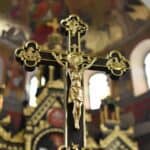Introduction
St. Peter’s Basilica, located in the heart of Vatican City, is one of the most famous and important churches in the world. As a masterpiece of Renaissance architecture and a center of the Roman Catholic faith, it attracts millions of visitors and pilgrims each year. This grand basilica stands as a symbol of religious devotion, artistic brilliance, and historical significance. With its stunning dome designed by Michelangelo, magnificent interior, and spiritual importance, St. Peter’s Basilica is a must-visit destination for tourists and believers alike.
Historical Background
St. Peter’s Basilica was built on the site where St. Peter, one of Jesus Christ’s apostles and the first Pope, was believed to have been buried. The construction of the present basilica began in 1506 under Pope Julius II and was completed in 1626 under Pope Urban VIII. Several renowned architects, including Donato Bramante, Michelangelo, Carlo Maderno, and Gian Lorenzo Bernini, contributed to its design. The basilica replaced an earlier church built by Emperor Constantine in the 4th century, which had stood for over a thousand years before being demolished.
Architectural Marvel
St. Peter’s Basilica is an architectural masterpiece that represents the pinnacle of Renaissance and Baroque design. The basilica’s façade, designed by Carlo Maderno, features grand columns, intricate sculptures, and a massive entrance. However, the most striking feature is its iconic dome, which was initially designed by Michelangelo and later completed by Giacomo della Porta.
The dome rises to a height of 136.57 meters (448.1 feet), making it one of the tallest in the world. From the top of the dome, visitors can enjoy breathtaking panoramic views of Vatican City and Rome. The interior of the basilica is equally impressive, with lavish decorations, stunning mosaics, and intricate details that showcase the artistic genius of the Renaissance period.
Interior Highlights
The interior of St. Peter’s Basilica is adorned with magnificent sculptures, paintings, and altars that hold deep religious and artistic significance. Some of the most remarkable highlights include:
- The Baldachin by Bernini – This towering bronze canopy, located above the papal altar, was designed by Gian Lorenzo Bernini in the 17th century. It stands at 29 meters (95 feet) and serves as a focal point within the basilica.
- The Pietà by Michelangelo – One of the most famous sculptures in the world, Michelangelo’s Pietà depicts the Virgin Mary cradling the lifeless body of Jesus. Created when Michelangelo was just 24 years old, this masterpiece showcases his extraordinary talent.
- St. Peter’s Tomb – Beneath the basilica lies the Vatican Grottoes, where the tomb of St. Peter is located. Many popes have also been buried in this sacred space.
- The Chair of St. Peter (Cathedra Petri) – This large wooden throne, enclosed in a magnificent gilded sculpture by Bernini, symbolizes the authority of the Pope and the continuity of the Church.
- The Nave and Side Chapels – The basilica’s vast nave is adorned with beautiful marble floors, golden ceilings, and elaborate mosaics that depict biblical scenes and saints.
Religious Significance
St. Peter’s Basilica is the spiritual center of the Roman Catholic Church and serves as the main church for papal ceremonies. Every year, thousands of worshippers gather in St. Peter’s Square to receive the Pope’s blessings. The basilica is also a place of pilgrimage, as it houses the tomb of St. Peter and many relics of saints.
The basilica hosts important religious events, such as the Papal Mass, Christmas and Easter celebrations, and the canonization of new saints. It remains a powerful symbol of Christianity and the authority of the Pope.
Visiting St. Peter’s Basilica
St. Peter’s Basilica is open to visitors throughout the year, and entrance is free. However, there may be long queues, especially during peak tourist seasons. Visitors should follow the dress code, which requires modest clothing (no shorts, short skirts, or sleeveless tops).
For those who wish to explore more, a guided tour of the Vatican Museums, the Sistine Chapel, and St. Peter’s Basilica provides a comprehensive experience of Vatican City’s artistic and religious treasures. Climbing to the top of the dome offers a spectacular view of the city and is highly recommended.
Conclusion
St. Peter’s Basilica is not only an architectural and artistic marvel but also a deeply significant religious site. Its rich history, stunning design, and spiritual importance make it one of the most visited landmarks in the world. Whether you are a history enthusiast, an art lover, or a pilgrim, visiting St. Peter’s Basilica is an unforgettable experience that connects you to centuries of faith, culture, and human achievement.
By exploring its breathtaking interior, admiring its world-famous sculptures, and experiencing its spiritual ambiance, visitors can truly appreciate why St. Peter’s Basilica is considered one of the greatest churches in history.




